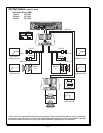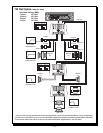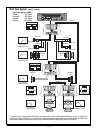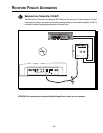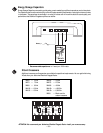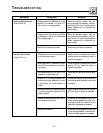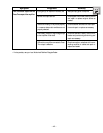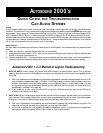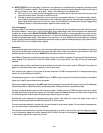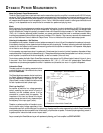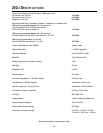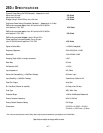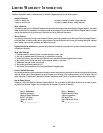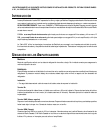
A
UTOSOUND
2000's
QUICK CHECK FOR TROUBLESHOOTING
CAR AUDIO SYSTEMS
Preface:
All audio systems exhibit noise; however, if the level of noise is low enough, and the signal level high enough, noise should not be
a problem. This means that it is very important that the signal level throughout the system be optimized BEFORE dealing with your
noise problem. Using a scope (or a small portable amplifier) and Track 99 (1kHz at all high bits) of Rockford Fosgate CD RF-
CD101 (Autosound 2000's CD #101) or Tracks 24 through 29 of Rockford Fosgate CD RF-CD102 (Autosound 2000's CD #102),
adjust the system so that when the maximum usable signal level of the deck is fed into the system, all the preamp level components
clip at the same time. However, we recommend up to as much as a 3:1 voltage overlap with the power amplifiers; i.e. an amplifier
with a 2 volt minimum sensitivity can be driven by up to 6 volts of signal.
Noise Overview:
Car audio electrical accessories are notorious for interfering with car audio systems. The interference commonly arises from three
areas:
1) Power line noise (5%), which can be attenuated with in-line noise filters,
2) Inadequate power supply isolation (45%), which can be cured with transformer signal coupling, additional isolated power
supplies, or changing out components, or
3) Inductive interference (45%) – including loop area inductive noise picked up by the signal cables – which can be remedied by
relocating or rewiring components, rerouting signal cables, or using twisted cable or balanced transmission systems.
Autosound 2000 1-2-3 Method of Logical Troubleshooting
I. MUTE THE AMP(S). Insert a muting plug (shorted male RCA connector) into each amplifier channel. Turn up the amp
sensitivity. Start the car and turn on the headlights, air conditioning, brake lights, etc. Listen for noise in each speaker. Be very
picky here!
A. If still noisy, substitute a small test speaker with short leads for the speakers, crossovers, and speaker leads in the car. If still
noisy, substitute an isolated power supply (120 VAC to 13.8 VDC bench supply or a small motorcycle battery) for the car's
alternator. If the amplifier is noisy with the test speaker, you have a BAD amp. Send it in. It really doesn't matter if it is quiet
or noisy while running on the isolated supply because you have a BAD amp. Send it in for repair and if it was quiet on the
isolated supply, indicate so on the repair tag.
B. If your muted amp is quiet, you've just joined 99.5% of car audio. Amps are usually very clean and do NOT pick up
unwanted noise! Continue on to Step II.
II. DECK TO AMP. Using a new set of signal cables, connect one channel from the output of the deck directly into one channel of
your clean amp. Run the cables outside the car and as far away as possible from the metal of the car. (For noise purposes,
consider a 2" thick cushion of electromagnetic energy emanating from every metal surface in the car.)
A. If still noisy, congratulations, in all probability your equalizer, electronic crossover, DSP, whatchamacallit, are just fine. This
means that you can't get your deck playing quiet with your amp, right? Go to Step III.
B. If all is quiet, congratulations, in all probability your deck and amplifier(s) are fine – you obviously have a problem with
your equalizer, electronic crossover, DSP, etc. Skip on down to “Time for the Processors.”
– 43 –



